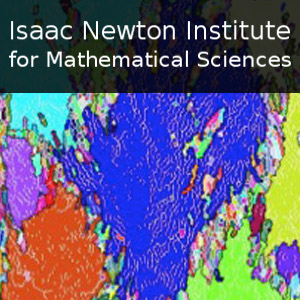Coulomb’s mechanics of sea ice: From geophysical evidences to experimental modeling
Duration: 1 hour 2 mins
Share this media item:
Embed this media item:
Embed this media item:
About this item

| Description: |
Weiss, J (CNRS (Centre national de la recherche scientifique), Université Joseph Fourier Grenoble)
Thursday 7th December 2017 - 13:30 to 14:30 |
|---|
| Created: | 2017-12-08 17:40 |
|---|---|
| Collection: | Mathematics of sea ice phenomena |
| Publisher: | Isaac Newton Institute |
| Copyright: | Weiss, J |
| Language: | eng (English) |
| Abstract: | In 1773, Charles Augustin de Coulomb 1 proposed his celebrated failure criterion, postulating that under shear and compressive stress states failure occurs along a fault plane when the applied shear stress acting on that plane overcomes a resistance made of two parts of different nature: a cohesion τ_0, and a frictional resistance proportional to the normal pressure σ_n. The relevance of the Coulomb’s “theory” of failure for faulting and earthquake mechanics was recognized more than one century ago2, and remains nowadays a major tool of interpretation in civil engineering, the mechanics of granular media, and solid Earth geophysics. Its application to sea ice mechanics is much more recent. Satellite imagery3, 4 as well as in-situ stress data5 revealed that most of Artic sea ice pack deformation occurs through the activation of Coulomb’s faults. Many questions remain however, such as the partitioning between cohesion and friction in the resistance of sea ice faults, the competition between faulting and healing (through refreezing) in setting the long-term dynamics of faulting, or sliding velocity effects. To explore these questions, an analog experiment was recently developed in Grenoble, consisting of a thin ice layer sitting on top of a water tank and mechanically deformed at various rates with a circular Couette-like geometry6. This allowed sliding along a circular fault surface over arbitrarily large slip distances, and analyzing the competition between faulting and healing from the control of the rotation velocity and the air temperature of the cold room. The results marked out the relevance of Coulomb’s mechanics towards small normal stresses, explored the role of mechanical forcing and air temperature on ice faults long-term dynamics, and may represent a benchmark for the future development of sea ice mechanical models. |
|---|---|
Available Formats
| Format | Quality | Bitrate | Size | |||
|---|---|---|---|---|---|---|
| MPEG-4 Video | 640x360 | 1.94 Mbits/sec | 904.85 MB | View | Download | |
| WebM | 640x360 | 621.16 kbits/sec | 282.07 MB | View | Download | |
| iPod Video | 480x270 | 522.11 kbits/sec | 237.09 MB | View | Download | |
| MP3 | 44100 Hz | 250.5 kbits/sec | 113.75 MB | Listen | Download | |
| Auto * | (Allows browser to choose a format it supports) | |||||

